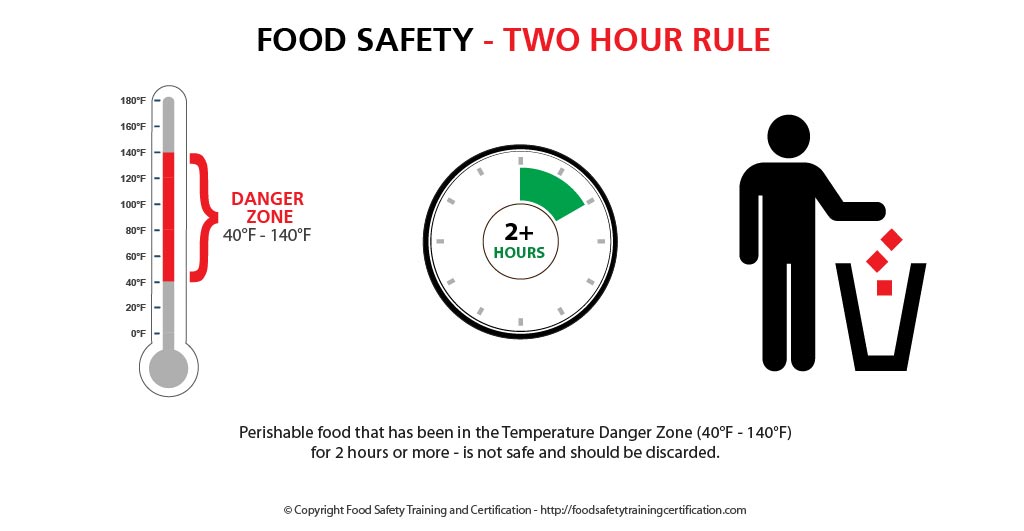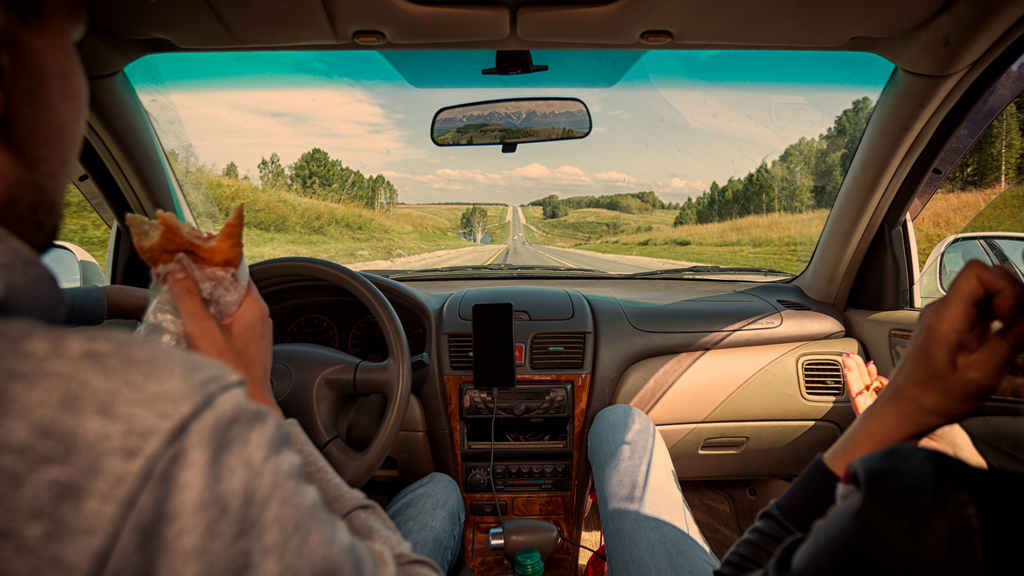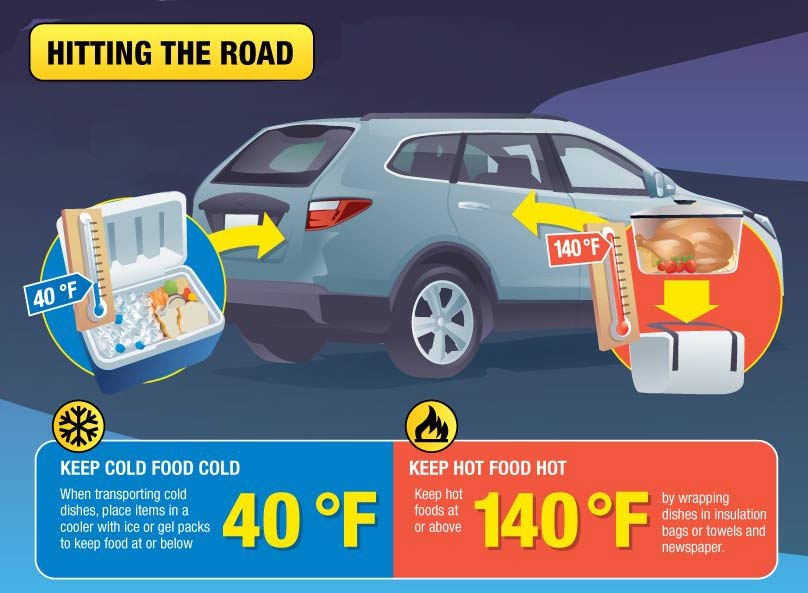Planning a road trip? Don’t forget to pack food safety. When eating and drinking while traveling on the road, follow important food safety principles and procedures, so your trip will be memorable – for all the right reasons.
 Image Source: Shutterstock
Image Source: Shutterstock Minimum Food Safety for Road Trips
The basic rules when it comes to food safety while traveling are to:
- Keep hot foods hot and cold foods cold. Also, a fully packed cooler keeps food colder longer than a partially filled one.
- Proper hand washing. Wash your hands with soap and water before you eat and after you use the bathroom. Use an alcohol-based hand sanitizer when soap and water aren’t available.
Temperature “Danger Zone”
Leaving food out too long at room temperature can cause bacteria to grow to dangerous levels that can cause illness. Bacteria grow most rapidly in the range between 40°F and 140°F, doubling in number in as little as 20 minutes. This range of temperatures is called the “Danger Zone”.
Track the time that food stays out in the open air temperature. Throw out any perishable foods that have been out at air temperature for 2 hours or more – and only in 1 hour if the temperature is over 90°F.

Food Safety Prep – Before the Road Trip
- Keep cold food cold. Place cold food in coolers with frozen gel packs or ice. Stashing it at 40°F or below prevents bacterial growth. Meat and poultry may be packed while it is still frozen; in that way it stays colder longer.
- Be sure to keep raw meat and poultry wrapped separately from cooked foods, or foods meant to be eaten raw such as fruits.
- Rinse all fresh produce under running tap water before packing it in a cooler, including produce with peel-away skins or rinds.
- Consider packing beverages in one cooler and perishable foods in another – since you are likely to grab beverages most often.
- Keep hot food hot. That means your best bet when packing is to take a pass on hot food unless you have a portable heating unit that can be safely used.
Food Safety on the Road
- Remember to wash hands with soap and water during food preparation, especially between tasks.
- If you can’t get to a restroom to wash your hands with soap and water, pack moist towelettes or a hand sanitizer to clean up before digging in.
- Don’t let food sit out unrefrigerated for more than two hours; in hot weather (above 90°F), the time is reduced to one hour.
- In hot weather, transport food in a cooler (packed with ice or ice packs) in the back seat of an air-conditioned car – instead of the trunk.
- If you don’t have access to a cooler, try packing frozen juice boxes or bottles of water for a hydrating refresher that will also help keep other foods around them cool.
- If you plan to cook family favorites like hamburgers, hotdogs or chicken breasts at home to take with on your trip, remember to cook to proper temperatures: hamburgers (at least 160°F), hot dogs (reheated to 160°F), and chicken (165°F).
- Consider packing easy-to-transport, shelf-stable foods: single-serve boxes of cereal, trail mix, popcorn, single-serve applesauce, cans of tuna peanut butter sandwiches, fresh fruit, carrots or celery.
- Don’t forget that carry-out and fast-food are also susceptible to food poisoning. Eat fast food within two hours; in hot weather (above 90°F), the time is reduced to one hour.
 Image Source: Shutterstock
Image Source: Shutterstock Food Safety on the Road
To ensure a memorable road trip – for the right reasons – make sure to follow important food safety principles and procedures.

